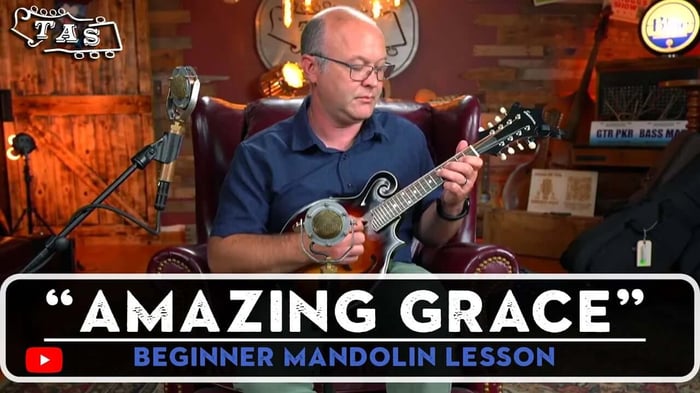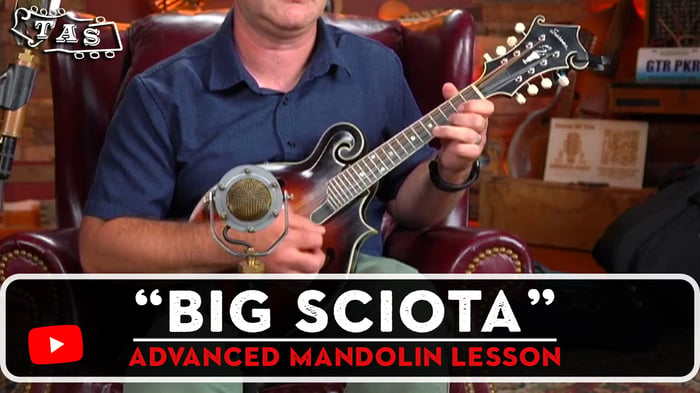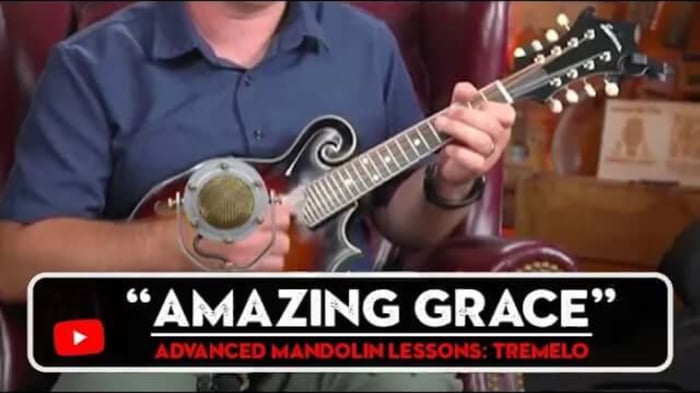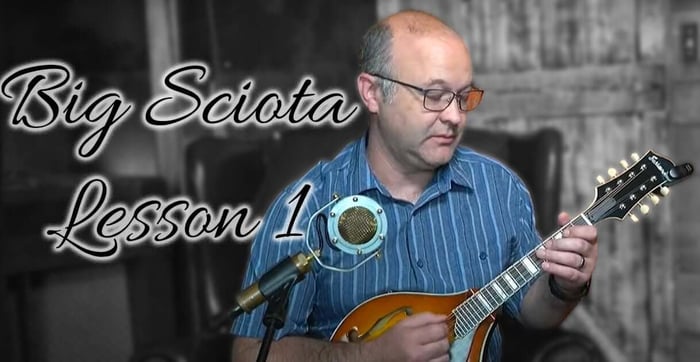Your Free Lesson: Amazing Grace Basic Melody Solo
Welcome to another Acoustic Shoppe Mandolin Sessions! Today, we're diving into a beloved classic, learning how to play Amazing Grace on mandolin. Jeremy Chapman breaks down a very simple, beginner-friendly version of the melody in the key of G. This timeless hymn is played in 3/4 time, giving it that beautiful, waltz-like rhythm – "one, two, three, one, two, three." It's a fantastic starting point for anyone new to the mandolin, offering fundamental techniques and a recognizable tune to build your confidence.
The Enduring Legacy of "Amazing Grace": A Hymn Across Centuries
"Amazing Grace" is arguably one of the most recognizable and cherished hymns in the English-speaking world. Its enduring legacy stems from its profound message of redemption and divine grace, combined with a melody that resonates deeply with people from all walks of life. The song's origins trace back to the hymn writer John Newton, an English poet and Anglican clergyman. Born in London in 1725, Newton's early life was marked by a turbulent career as a slave trader. He experienced a profound spiritual conversion during a violent storm at sea in 1748, an event he later described as a pivotal moment where he began to "believe and hope, and pray."
After leaving the slave trade, Newton devoted his life to Christian ministry, becoming an ordained Anglican priest in 1764. He served as curate of Olney, Buckinghamshire, where he collaborated with the poet William Cowper on the Olney Hymns collection, published in 1779. It was in this collection that "Amazing Grace" first appeared, under the title "Faith's Review and Expectation." The hymn's original lyrics reflect Newton's personal journey from a life of sin and despair to one of faith and salvation, particularly his deep regret over his involvement in the slave trade. The opening lines, "Amazing grace! (how sweet the sound) That saved a wretch like me! I once was lost, but now am found, Was blind, but now I see," powerfully convey his transformation.
While Newton wrote the lyrics, the melody we most commonly associate with "Amazing Grace" today was not originally paired with his words. The tune, known as "New Britain," is thought to be an American folk melody of uncertain origin, likely derived from earlier Scottish or Irish folk tunes. It first appeared in print with Newton's lyrics in an American hymnal called Virginia Harmony in 1831. The simple, pentatonic scale of "New Britain" made it highly accessible and easy to learn by ear, contributing significantly to its widespread popularity, especially in the American South during the Second Great Awakening revival movement.
Throughout the 19th and 20th centuries, "Amazing Grace" became deeply ingrained in American culture, particularly within African American spiritual traditions, where it was often sung in a call-and-response style. It became a powerful anthem for civil rights and social justice movements, sung by activists and protestors seeking equality and freedom. Its versatility allowed it to be adapted for various musical styles, from gospel and folk to country, bluegrass, and even rock and pop. Artists across genres, including Mahalia Jackson, Elvis Presley, Willie Nelson, Johnny Cash, and Judy Collins, have recorded iconic versions, further cementing its place in musical history.
Today, "Amazing Grace" transcends its religious origins, often performed at national events, memorial services, and public gatherings as a symbol of hope, resilience, and unity. Its message of forgiveness, redemption, and the transformative power of grace continues to resonate with millions worldwide, making it a truly universal hymn of comfort and inspiration. For mandolin players, learning how to play Amazing Grace on mandolin is not just about mastering a tune, but connecting with a rich piece of musical and cultural heritage.
Key Takeaways from This Lesson: Unlocking How to play Amazing Grace on Mandolin
Jeremy's lesson on how to play Amazing Grace on mandolin provides a clear roadmap for beginners. Here are the most important points to grasp:
3/4 Time Signature: The song is in 3/4 time, meaning there are three beats per measure. Jeremy emphasizes the "waltz-like" feel: "one, two, three, one, two, three."
Melody on Beats 1 & 3: For the basic melody, you'll primarily be playing on the first and third beats of each measure, letting the first note sustain through the second beat. This creates a flowing sound despite the rests shown in TAB.
Starting on an Upbeat: The melody begins on the last beat (beat 3) of the measure before the first full measure. This is crucial for proper timing: "1, 2, 3, 1, 2, D (open) 5 (on D string) 2 (on A string)."
Open String Usage: The melody makes excellent use of open D and A strings, which simplifies fingering for beginners.
Sustaining Notes: Jeremy recommends holding down notes, especially the G on the 5th fret of the D string, to help them sustain and fill the measure.
Ring Finger Technique: When playing the 5th fret on the A string and then the open E, pay attention to the pad of your ring finger to avoid muting the E string. Aim for a clean, straight-down press.
Basic Chord Shapes (G, C, D): Learn two-finger versions of G (2nd fret A, 3rd fret E), C (2nd fret D, 3rd fret A), and D (4th fret D, 5th fret A).
Bluegrass Vamp Rhythm: For backup, learn the "vamp" rhythm. This involves lifting your fingers slightly after picking to dampen the chord, preventing over-sustain, especially on beats 2 and 3 in 3/4 time.
Chord Transition for Solos: When transitioning from chords back to the melody solo, omit the last two beats (the "two, three") of the final chord measure (e.g., G D G... then start your solo on the open D string). This gives you time to prepare.
Mandolin TAB/Chord Chart for "Amazing Grace"
To help you learn how to play Amazing Grace on mandolin, we've prepared a high-quality TAB and chords for this lesson's basic melody solo. The TAB is designed to be clear and easy to follow, allowing you to see the exact finger positions and rhythms Jeremy teaches in the video. Remember, while the TAB provides the notes, pay close attention to Jeremy's explanation of the 3/4 time feel and how to sustain notes across rests for the best musicality.
[Download a high-quality PDF version of the TAB here!]
Practice Tips for Success with "Amazing Grace"
Mastering how to play Amazing Grace on mandolin requires consistent and thoughtful practice. Here are some tips to help you along:
Start Slow, Use a Metronome: Always begin practicing at a very slow tempo with a metronome. This is crucial for developing accurate timing in 3/4 time. Gradually increase the speed only after you can play it flawlessly at a slower pace.
Count Out Loud: Actively count "one, two, three" as you play. This reinforces the 3/4 rhythm and helps you understand where each note falls within the measure, especially the sustained notes on beat 1.
Focus on Sustain: Practice letting the first note of each measure ring out through beat two, as Jeremy demonstrates. This is key to the tune's flowing sound.
Isolate Tricky Sections: If a particular measure or phrase is giving you trouble, isolate it. Practice just those few notes repeatedly until they feel comfortable before reincorporating them into the full melody.
Clean Fingering: Pay attention to your left-hand finger placement. Ensure your fingers come straight down on the fretboard to avoid buzzing or muting adjacent strings, particularly with the ring finger when transitioning from A to open E.
Listen Actively: Listen to various recordings of "Amazing Grace" (both instrumental and vocal) to internalize the melody and its phrasing. Compare your playing to the video to catch any discrepancies.
Practice Chord Transitions: If you're working on the chord accompaniment, practice switching smoothly between G, C, and D. Focus on the two-finger shapes and the bluegrass vamp technique.
Record Yourself: One of the best ways to learn how to play Amazing Grace on mandolin is to use your phone or a simple recording device to record your practice sessions. Listening back objectively can reveal areas for improvement that you might not notice while playing.
Gear Used in This Lesson
In this free mandolin lesson, Jeremy demonstrates how to play Amazing Grace on mandolin using some excellent gear available at The Acoustic Shoppe. Here's what he's playing:
Eastman MD515 TV-WN Mandolin: This is a fantastic instrument for intermediate to advanced players, known for its superb tone and playability. The "TV-WN" indicates the wide nut option in the Truetone Vintage finish, offering a comfortable feel and a rich, resonant sound perfect for acoustic music. You can learn more about this specific model here: [Link to Eastman MD515 TV-WM Mandolin Product Landing Page Blog Post]
Tone Guard (Deco Pattern): Jeremy uses a Tone Guard on the back of his mandolin. This accessory helps prevent your body from dampening the back of the instrument, allowing it to resonate more freely and produce a fuller sound.
Jeremy Chapman Signature Model Pick from Tone Slabs: Jeremy's pick of choice is his own signature model from Tone Slabs. Using a high-quality pick can significantly impact your tone and playability.
D'Addario Eclipse Tuner: To ensure his instrument stays perfectly in tune, Jeremy uses a D'Addario Eclipse tuner. A reliable tuner is an essential tool for any musician.
All of these high-quality acoustic music products are available at The Acoustic Shoppe.
Continue Your Journey with Free Mandolin Lessons!
Learning how to play Amazing Grace on mandolin is just one step on your exciting musical journey. The Acoustic Shoppe is committed to providing valuable resources to help you grow as a mandolin player. Keep exploring new tunes and techniques with Jeremy Chapman!
You can find all of our other free mandolin lessons here: Acoustic Shoppe Mandolin Sessions.
Keep an eye on The Acoustic Shoppe for more great acoustic music content and free mandolin lessons!
About Your Instructor: Jeremy Chapman
Your mandolin journey at The Acoustic Shoppe is guided by Jeremy Chapman, a musician who truly lives and breathes acoustic music. Jeremy spent over 25 years touring and performing with his family's bluegrass band, The Chapmans, even gracing the iconic stage of the Grand Ole Opry. With two decades of experience teaching private mandolin lessons, he's helped countless students find their way around the fretboard. Jeremy is also the author of the popular Do-It-Yourself Mandolin book (Hal Leonard), known for making learning accessible and fun. As President and CEO of The Acoustic Shoppe, he's dedicated to bringing the joy of music to players everywhere.






